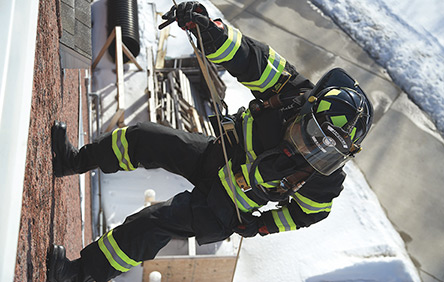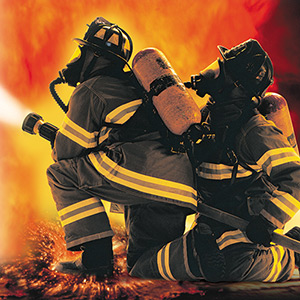So You Think You Want to Switch to Black Turnout Gear…
...If So, There Are Some Things You Should Know.

This is what I would say to a fire department that is contemplating making a switch from a gold, khaki, or yellow outer shell to a black outer shell. The reason for making this statement is that more times than not, fire departments making a switch to a black outer shell become disappointed when the fabric changes color. It doesn’t matter which black textile fabric is specified and it doesn’t matter which garment manufacture makes the gear, the color changes in black outer shells are going to occur and the fire department needs to be prepared for those color changes before making the switch.
Regarding customer expectations on color change, for a fire department wearing a gold, khaki, or yellow outer shell—there is almost never a problem. For a fire department who has worn a black outer shell for 5 or more years (Chicago, Philadelphia, Baltimore, San Francisco, Seattle, Charleston, etc.) there is almost never a problem. But for a fire department that switches from gold, khaki, or yellow to a black outer shell—there is a 50/50 chance there will be a problem in the first year.
The reason for the problem is due to unrealistic expectations on what the black outer shell will look like after 6 months, 12 months, or years of use and the unpredictable time frame in which the color change will occur.
Fire departments who have worn black turnout gear for many years expect the black color to turn to charcoal in color after wash. How quickly the shel turns to charcoal can depend on many factors including: the construction of the fabric, the dye process used, the number of times it is washed, the detergents (pH) used in the wash, the temperature of the water, and the chlorine levels of the water in the extractor. While the time frame for the color change may vary from department to department one thing is certain, the black color will fade. The next time you are in New York, Chicago, or San Francisco take a look at the turnout gear worn by fire fighters and you will see many shades of black. If you can’t make it to one of those cities, perform an online search for one of those departments and you can see images of how the black gear looks.
Another issue that occurs with black outer shells is the color change after exposure to UV. Fire departments who have worn black outer shells for many years know that with exposure to UV comes a color change with a tint of red or purple. Solution- dyed black fabrics are likely to turn to a red tint and fabric-dyed black fabrics are likely to turn to a purple tint in areas of the garment that experience extended UV exposure. It is important to note that while direct sunlight will accelerate the color change in black fabrics, indirect sunlight will also have a similar affect. For example, turnout gear that sits in an open locker isn’t necessarily safe even if that locker is away from the bay door and windows where sunlight shines through. The reason of course is that UV rays do not hit the ground or an object and simply disappear…the rays reflect and bounce around the room and are certain to impact the color and strength of the turnout gear over time…one reason proper storage of turnout gear is always stressed. Again, predicting the amount of color change from UV exposure in a certain time frame is impossible because every situation is different…
different ways the gear is stored and different levels of UV strength (Denver—high altitude vs Miami— more days of sunlight).
The common response from fire departments who are unhappy about the color change in black outer
shells is that it must be the fiber manufacturer’s fault (DuPont™ or PBI), the textile manufacturer’s fault (Safety Components or TenCate), or the garment manufacturer’s fault. While we would never rule out the possibility that the fiber manufacturer or textile manufacturer could make an off quality run of product, this rarely, if ever, has anything to do with the color change. As discussed above, the color changes are almost always predictable and easily diagnosed after knowing the color to which the black outer shell fades.
So what do you do if you still want to make the switch to a black outer shell?Becoming educated is the best place to start. You can gain knowledge by communicating and questioning fire department’s already wearing black outer shells. Maybe take a trip to look at another department’s black turnout gear to see the way different black fabrics look after they are in the field. You can also gain knowledge by reaching out to experts in the field— every fiber, textile, and garment manufacturer has someone who can give you more detailed information similar to that listed in this blog. Your local ISP (Independent Service Provider) who likely washes thousands of sets of gear each year will have in-house different black fabrics that also reflect the color changes discussed- go take a look. Finally and most important, perform a wear trial in the black turnout gear you think you want before you specify it. Conduct the wear trial for at least6 months and wash the gear 2-3 times and you will start seeing some of the color changes already described.
Is your department currently wearing a black outer shell? If so, please share your experiences…good or bad here.
Be safe and good luck if you are one of those who decides to make the switch…I know some of you will!
